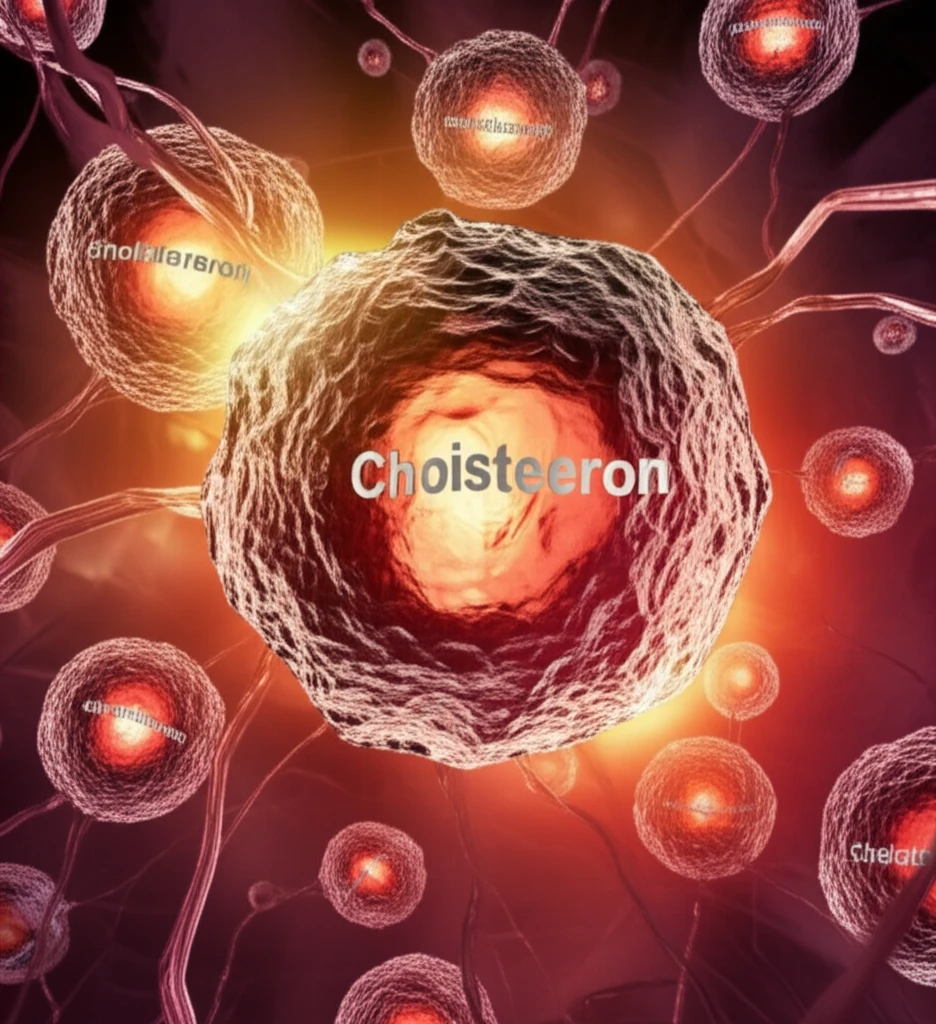
Cholesterol's Hidden Role: How It Impacts Your Skin's Youthfulness
"New research reveals how cholesterol levels can affect the appearance of wrinkles and skin aging by influencing key pathways in skin cells."
We often think of cholesterol in terms of heart health, but emerging research suggests it plays a significant role in the appearance and health of our skin. Cholesterol, a major component of cell membranes, influences everything from cell signaling to the transport of nutrients. Understanding how it interacts with skin cells could unlock new secrets to combating aging.
A recent study investigated the effects of cholesterol on matrix metalloproteinase-1 (MMP-1) expression in human dermal fibroblasts – the cells responsible for collagen production in our skin. MMP-1 is an enzyme that breaks down collagen, and its increased activity is linked to wrinkle formation and skin aging.
This article will delve into the fascinating findings of this research, exploring how cholesterol levels impact the delicate balance of MMP-1 expression, and what this means for maintaining youthful, healthy skin. We'll break down the science in an accessible way, providing you with actionable insights to protect your skin's vitality.
The Cholesterol-Collagen Connection: What the Research Reveals

The study's findings revealed a direct correlation between cholesterol levels and MMP-1 expression. When skin cells were treated with cholesterol, MMP-1 production decreased. Conversely, when cholesterol was depleted using a specific agent, MMP-1 expression increased. This suggests that cholesterol acts as a regulator, helping to keep MMP-1 – and therefore collagen breakdown – in check.
- Cholesterol Depletion Activates ERK and JNK: When cholesterol was removed from the skin cells, the ERK and JNK pathways became more active.
- ERK and JNK Increase AP-1 Activity: Activated ERK and JNK pathways led to increased activity of AP-1, a transcription factor that promotes MMP-1 production.
- Cholesterol Repletion Reverses the Effect: Adding cholesterol back into the cells reversed these effects, inhibiting ERK and JNK activation and reducing MMP-1 expression.
The Future of Cholesterol and Skin Health
This research sheds light on the intricate relationship between cholesterol and skin aging. While we often focus on external factors like sun exposure and skincare products, maintaining healthy cholesterol levels within skin cells could be another crucial piece of the puzzle.
It's important to note that this study was conducted on cultured skin cells and further research is needed to fully understand these mechanisms in living human skin. However, the findings offer a promising avenue for developing new strategies to combat skin aging.
Moving forward, potential areas of exploration could include topical applications of cholesterol or cholesterol-regulating agents, as well as dietary interventions to support healthy cholesterol levels in the skin. By understanding and harnessing the power of cholesterol, we may unlock new secrets to maintaining youthful, radiant skin for years to come.
